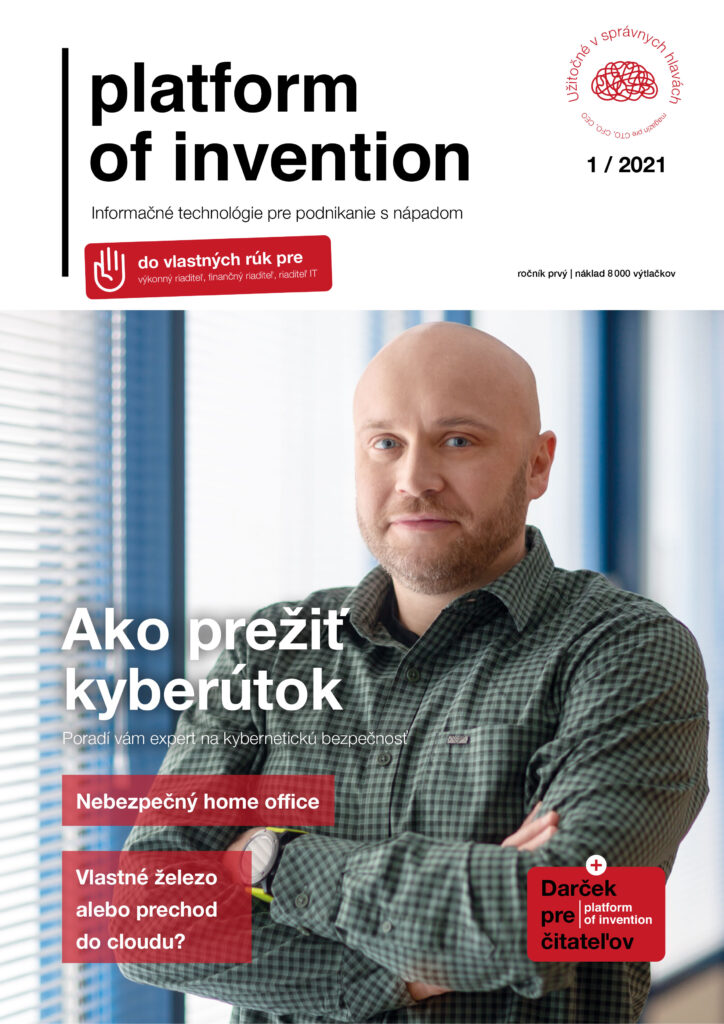As a result of the pandemic, employees swapped corporate offices for home offices. In practice, this means extending the corporate network to hundreds of different homes across the country. In order to protect themselves from the ever-evolving cyber threats in this environment, organizations need to know exactly what is happening on all endpoint devices. ESET offers the ultimate overview with its new ESET PROTECT product suite. Cloud deployment allows you to manage endpoint devices from one place quickly and easily via a cloud console. Remote management, which started to be a trend even before the pandemic, also has the advantage of affordability. Cloud-based security eliminates the server maintenance costs that are common with on-premises solutions. In addition, the platform is scalable to meet the needs of businesses of all sizes .
“Cloudification”, i.e. the process of moving applications and services from local IT infrastructure to the cloud accessible via the Internet, has long been a top priority for many companies. Resources migrated to the cloud are accessible from virtually anywhere, which naturally increases their availability to employees. The cloud also reduces costs for companies by eliminating the expenses associated with running servers, maintaining hardware, and installing patches for operating systems and software.
Although cloudification has been gaining momentum and intensity for quite some time, the events of 2020 have accelerated this process even further. This makes the transition to cloud solutions a more important topic than ever before. A lot has changed in recent months, both in the business sphere and in the world at large. Services and processes are largely being placed in the cloud rather than physically on-premises. While this brings a number of benefits to businesses and organisations, it can be challenging to manage a large number of different management consoles, especially when it comes to security.
The digital threat landscape is constantly changing and evolving. We can read, for example, about botnet disruptions, the discovery of new groups targeting advanced persistent threats, or the collusion of multiple criminal groups. Companies whose employees work remotely are even more vulnerable to these changes and new risks. This makes it all the more important to have a real-time, end-to-end view of network security so that if a threat is detected, it can be acted upon quickly to mitigate the consequences.
In this context, ESET is launching ESET PROTECT Cloud, which enables companies to quickly and easily deploy, configure and centrally manage ESET security products from a single location. ESET PROTECT Cloud is the successor and extension of ESET Cloud Administrator, and ESET’s goal is to more broadly cover the needs of the corporate segment through a flexible, scalable and customizable cloud service. Customers who are currently using ESET Cloud Administrator will have their solution automatically upgraded to ESET PROTECT Cloud at no additional cost. The new solution also increases the upper limit of managed devices, so customers will be able to manage more devices than before. ESET PROTECT Cloud focuses on solving the challenges and problems that businesses and organizations of all sizes actually face and aims to meet their endpoint security management needs.
ESET PROTECT Cloud gives you visibility of your entire network, including devices both on and off premises. IT administrators can view and manage all detections reported by ESET security products deployed on the corporate network, and can also export these detections, along with other log data, and embed them into SIEM tools for managing security information and events. In addition, IT administrators can view information directly related to a specific device, such as its hardware or software equipment, so they always have a complete view of the corporate inventory for hardware and software management purposes.
This solution also brings a number of new interesting features, such as cloud-based mobile device management (ESET Cloud MDM), a cloud service that is natively integrated into ESET PROTECT Cloud. ESET Cloud MDM in conjunction with ESET Endpoint Security for Android enables mobile device management and provides an additional layer of security. It protects users of Android devices from the most common threats typical of this platform, while preventing the spread of malware that can infiltrate the corporate network specifically through mobile devices.
ESET PROTECT Cloud also introduces automatic updating of agents that are deployed on endpoint devices and enables their management. These updates aim to ensure better stability, compatibility and performance. This saves administrators from having to spend unnecessary time maintaining this essential infrastructure.
In addition, ESET PROTECT Cloud brings the ability to use ESET Full Disk Encryption on a new platform by allowing Mac users to manage native FileVault encryption. ESET Full Disk Encryption is a one-click feature that allows administrators to deploy, activate and encrypt endpoint devices with a single click. They can then monitor and manage the encryption status of data stored on connected endpoints from a central console.This significantly improves the security of corporate data and helps ensure compliance with applicable regulations such as GDPR.
The secure browser, which is available in ESET Endpoint Antivirus and ESET Endpoint Security, will be managed via ESET PROTECT Cloud. This feature will protect web browsers from other processes running on the computer and prevents any unwanted manipulation of the browser. It also eliminates browser extensions that interfere with the user’s actions to commit fraud.
Last but not least, businesses will get the opportunity to use ESET Dynamic Threat Defense, which uses machine learning on high-performance computers in the cloud to provide advanced detection and protection against new, previously unknown types of threats. Users can also send suspicious files via ESET PROTECT Cloud for malware analysis in the cloud environment, receiving a report back on the activity of the sent sample. From the report, the administrator learns more information about the file, can view a detailed analysis of the behavior, and can create an exclusion from inspection for the detection if necessary.








